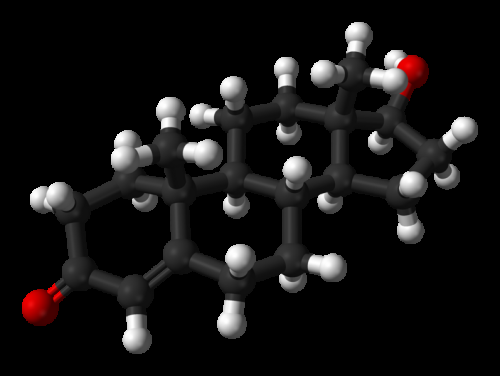Rise in testosterone level boosts young women's running capacity

A rise in the level of the male hormone testosterone significantly boosts young physically active women's capacity to run for longer, reveals the first study of its kind, published online in the British Journal of Sports Medicine.
Testosterone also increases muscle mass and leanness, even though body weight doesn't change, the findings show.
The impact of the hormone on athletic performance has prompted international controversy over whether it is fair to allow female athletes with testosterone levels in the male range, as a result of rare inborn conditions, to compete against women with normal levels of the hormone.
The prevalence of elite female athletes with these conditions is thought to be around 140 times higher than in the general population.
The International Association of Athletics Federations (IAAF) has stipulated that these athletes must lower testosterone levels to below 5 nmol/l of blood to be eligible to compete at international level in middle distance races (400 m to 1 mile). This policy has been widely criticised and legally challenged.
In the absence of little hard evidence on the effect of testosterone on women's physical performance, the researchers randomly assigned 48 physically active and healthy 18 to 35 year old women to 10 weeks of daily treatment with either 10 mg of testosterone cream or 10 mg of an inactive (placebo) substance.
They tested the hormone's impact on aerobic performance, measured by how long the women could run on a treadmill before reaching the point of exhaustion.
And they tested its impact on anaerobic performance (requiring short bursts of energy only), measured in leg power (stationary cycling) and muscle strength (squat jumps, standing vertical jumps, knee strength).
Hormone levels and body composition—percentage of body fat and lean muscle mass—were measured at the beginning and end of the 10 week trial period.
Average circulating levels of testosterone rose from 0.9 nmol/litre of blood to 4.3 nmol/l among the women given the hormone cream. No increase occurred in the group given the inactive cream.
Among those given testosterone, running time to exhaustion increased significantly by 21.17 seconds (8.5%) compared with those given the inactive substance.
There were no significant changes between the two groups on any of the anaerobic performance measures. Nor were there any changes in weight between the two groups at the end of the 10 week trial period.
But women given the testosterone cream had much larger changes in lean muscle mass than those given the inactive cream: 923 g vs 135 g, overall; and in their legs, 398 g vs 91 g.
The researchers acknowledge that their study didn't include elite athletes, was relatively small, and that the trial period lasted only 10 weeks.
Nevertheless, they point out that the average increase in testosterone levels to 4.3 nmol/l among the women given the hormone cream is below the average range found in men. Yet it still significantly increased the length of time they could run before reaching exhaustion.
"Our results are therefore of great importance for the ongoing discussion of whether it is fair to allow athletes with naturally high testosterone to compete in the female category without reducing their hormonal concentration to the female range," they conclude.
More information: Effects of moderately increased testosterone concentration on physical performance in young women: a double blind, randomised, placebo controlled study, British Journal of Sports Medicine (2019). DOI: 10.1136/bjsports-2018-100525



















